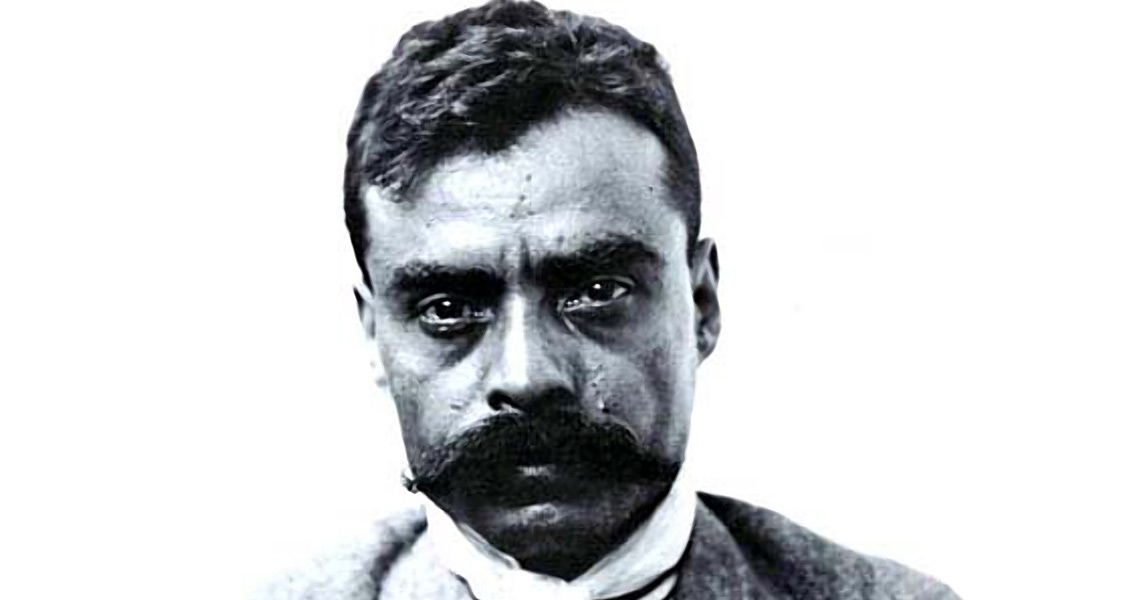<![CDATA[Emiliano Zapata was born on 8th August, 1879. A key figure in the Mexican Revolution and upheavals of the early twentieth century, Zapata is remembered for his commitment to winning agrarian reform, and his dedication to the people of the state of Morelos. Although he died nearly a century ago, Zapata is still held up as a martyr in Mexico. A ferocious campaigner for land reforms, he is considered a visionary by many. He may have failed in his dream of having land fairly redistributed in Mexico, but even today there are those who continue to fight for the ideals he represented. Born in Anenecuilco, just south of Mexico city, Zapata would live his whole life in the region. His family were peasants, although sufficiently well off to own their own land and not be peons (essentially farmers enslaved through debt). In the late eighteenth century much of the farm land in Mexico had been converted to haciendas - rich farms designed purely to make profit. The majority of Mexico's rural population were deprived of land ownership, and forced to work growing cash crops such as sugar cane for the wealthy hacendados. Zapata, like many others from the Mexican countryside, viewed the situation as a grave injustice, considering the peasants to have been deprived of what was rightfully theirs. The haciendas in Morelos were particularly notorious, with harsh working conditions and oppressive foremen who abused those working the land. In 1897 Zapata was arrested for taking part in a peasant's protest against the haciendas. His punishment was to be drafted into the Mexican army. After just six months Zapata was discharged from the military and he went to work in Mexico City, building a reputation as a formidable horse trainer and bull fighter. In 1809 he was called back to Anenecuilco to serve as the village's council board president. He quickly began campaigning to protect local farm owners from attempts by hacendados to take their land. Zapata used villagers' ancient title deeds to establish their claims to the land, and fought for their interests through the local government. As legal means became increasingly ineffective, Zapata and his followers began to use force to occupy land and keep it free from the Haciendas. In 1910, when the exiled Francisco Madero called for revolution following President Porfirio Diaz's rigging of an election, Zapata, like Pancho Villa in the north of the country, responded by forming an army to fight the federal forces. Zapata likely sensed an opportunity to use the Mexican Revolution to win the land reform he had long fought for. Diaz was defeated in 1911 and replaced with Madero, but Zapata's fight for land reform was far from resolved. It soon became apparent that Madero had no real interest in agrarian reform. Zapata led his armies against Madero, and set out a clear plan for the land redistribution he desired in the south of Mexico. A pattern emerged, as subsequent administrations failed to deliver the land reforms Zapata had hoped for. Zapata and his guerrilla soldiers continued to fight against the government of Victoriano Huerta and then Venustiano Carranza. The land reforms Zapata and his followers fought for were never implemented across Mexico, but in the territories they controlled they succeeded in helping poor farmers and redistributing much of the land which had been taken by haciendas. Indeed, as Villa and Carranza fought over control of the Mexican government between 1914 and 1915, the Zapatismo movement was largely left alone in the southern states. This all changed following Villa's defeat. Carranza turned his attentions on Zapata in the south, who remained defiant of his government, even if not actively fighting it. Early in 1916 Carranza sent his general, Pablo Gonzalez, to hunt and eliminate Zapata and his forces. Gonzalez was brutal in his pursuit, destroying villages and having executed anyone suspected of supporting Zapata. With Villa's northern forces wiped out, Zapata's armies found themselves facing the full force of the Mexican government. Between 1917 and 1918 Zapata's soldiers managed to hold out against the federal soldiers for a while, but as reinforcements were sent from the north defeat seemed inevitable. In April 1919 Zapata was ambushed and killed by the forces of Colonel Jesús Guajardo, who had tricked Zapata into believing he wanted to change sides. ]]>
Emiliano Zapata Born in Anenecuilco
